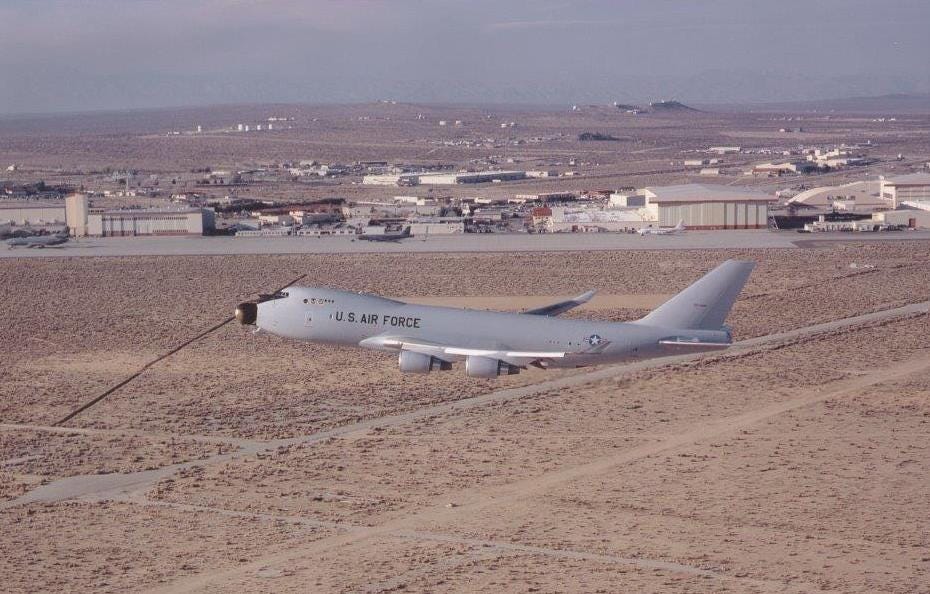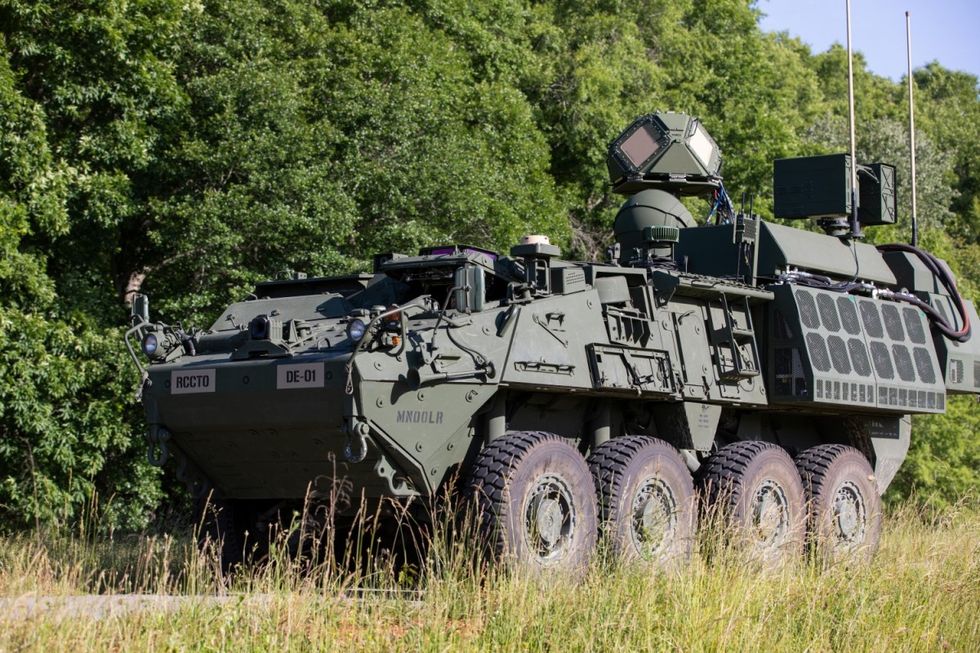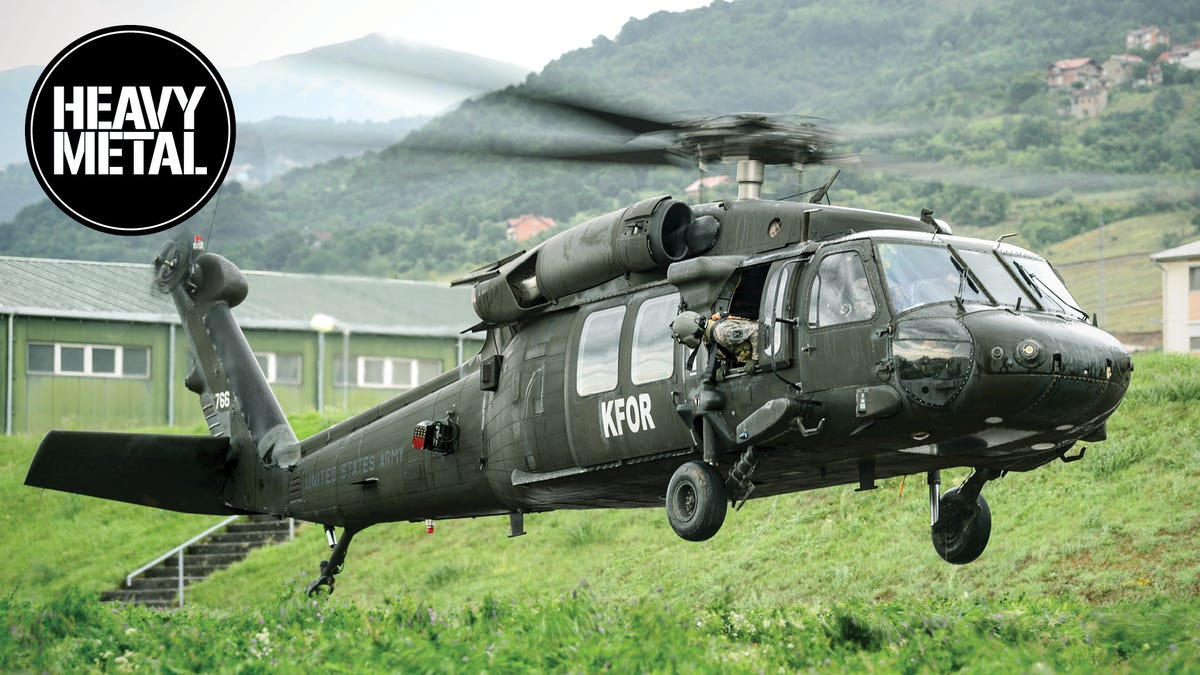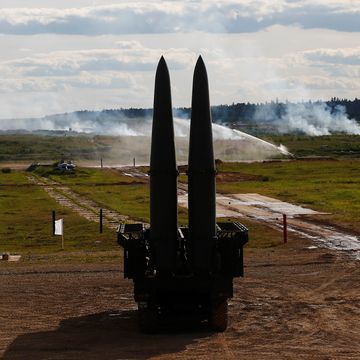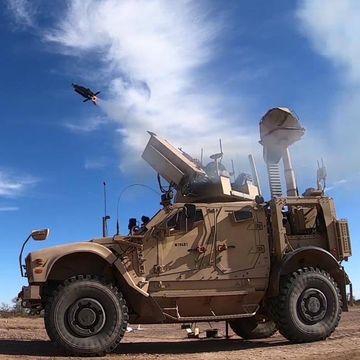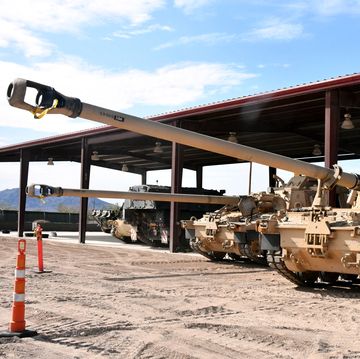- The U.S. Navy just signed a contract for a new portable laser weapon system.
- Known as C-UAS HELWS, the service will use the weapon to target drones.
- Thanks to new technology, lasers are getting smaller, but the elusive, handheld laser blaster isn't reality—yet.
The U.S. Office of Naval Research recently ordered a "compact, portable" laser weapon system, according to a Department of Defense contract notice filed in August. In other words, it's basically funding a real-life ray gun. The Navy will use the weapon, known as the Counter-Unmanned Air Systems High Energy Laser Weapon System (or C-UAS HELWS for short), to shoot down drones.
✈︎ Don't miss our best-in-class military news. Join our squadron.
MZA Associates Corporation, based in Albuquerque, New Mexico, will "design, develop, deliver, integrate, test, and demonstrate" C-UAS HELWS with existing commercial components, according to the $18.7 million contract, first spotted by Forbes. Development will take place between Albuquerque and Dayton, Ohio, and should be completed between 2023 and 2025.
Although it's still a long way from the handheld ray guns popularized in science fiction, C-UAS HELWS does illustrate a trend in laser weapon miniaturization, made possible by government-funded research and development.
That's good news, because lasers are very effective against drones. A focused beam of light can quickly heat up a drone's exterior, inducing structural failure and causing it to crash into the ground. For a fixed-wing drone, that might mean burning one of the wings off. A laser could down a quadcopter-style drone by melting a plastic or metal arm supporting one of its propellers. A laser could also ignite a drone's liquid fuel supply or blind its optical sensors—especially those used by a human controller to guide it to a target.
Lasers have other advantages, too. Because they move at the speed of light, lasers don't need to be "lead" to their target. They're also unaffected by gravity, a serious consideration with ballistic projectiles (like bullets or cannon shells) at extended distances. They also can't run out of ammunition, though the generator that powers the lasers can run out of fuel, or a battery might run down.
One of the first laser weapons to exist was the YAL-1 Airborne Laser Testbed. Developed in the mid-2000s, the YAL-1 consisted of a Boeing 747 airliner with a laser weapon in the nose and tanks of chemicals in the body. The laser—a chemical oxygen iodine laser (COIL)—fell into the megawatt class and was designed to shoot down ballistic missiles mere moments after launch. Unfortunately, the flying laser was plagued with technical and financial problems during development and never reached operational status.
A more recent (and much smaller) weapon is the AN/SEQ-3 laser weapon system (LaWS). LaWS is the size of a shipping container and has a power output of 30 kilowatts, making it useful against drones. The AN/SEQ-3 was the first operational American laser weapon, deploying in the Middle East back in 2014 on the afloat staging base USS Ponce.
Today's lasers are even smaller, to the point where they are being fitted on a Stryker fighting vehicle. The Directed Energy Maneuver Short-Range Air Defense system (DE M-SHORAD) is smaller than the LaWS and 60 percent more powerful.
The Navy's newest laser promises to be even smaller. Forbes speculates that the 10-kilowatt laser could be in the same size and weight class as a .50-caliber machine gun, or about 100 pounds including ammunition. That could be small enough to mount to a Joint Light Tactical Vehicle (the replacement for the Humvee) or the Humvee itself. It could also go on Special Operations Craft—riverine, small, armed boats designed to patrol inland and coastal waterways and to transport NAVY SEAL teams.
While these new laser weapons aren't as powerful as a megawatt laser mounted on a 747, they are more reliable, more rugged, and cheaper than ever. We won't likely see a handheld laser blaster anytime soon, but a breakthrough in energy storage technology could push a true ray gun forward into that final frontier. Never say never.
🎥 Now Watch This:

Kyle Mizokami is a writer on defense and security issues and has been at Popular Mechanics since 2015. If it involves explosions or projectiles, he's generally in favor of it. Kyle’s articles have appeared at The Daily Beast, U.S. Naval Institute News, The Diplomat, Foreign Policy, Combat Aircraft Monthly, VICE News, and others. He lives in San Francisco.

